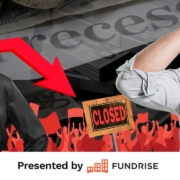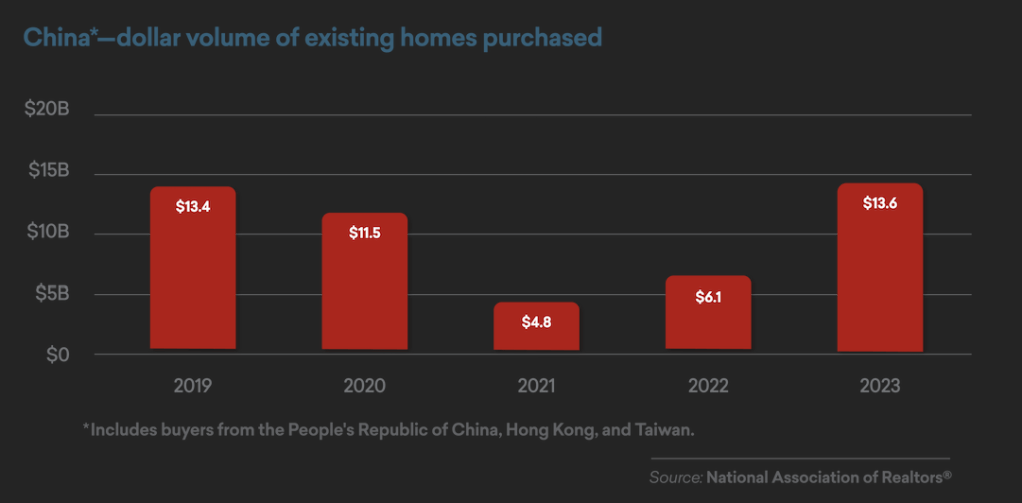If you’re interested in becoming a real estate agent in Illinois, you’ll be happy to hear that the path to getting your real estate license in the Prairie State doesn’t require as much of a time commitment as other states. What’s more, Illinois has reciprocity agreements with nine other states, making it an excellent location for starting an exciting, new career in real estate.
There are certain differences between being a real estate professional in Illinois and other states, which we’ll look at in this article. We’ll also dive into necessary steps and helpful tips, answer frequently asked questions, and provide all the key information you need to get your real estate license in Illinois, so keep reading.
How getting a real estate license in Illinois is different from other states
While most states call the professional who represents a buyer or a seller of commercial or residential real estate a “real estate agent,” Illinois calls this individual a “real estate broker.” The actual professionals who many states call “brokers,” however, are called “managing brokers” in Illinois. And you can also serve as a “leasing agent,” which is an individual licensed to engage in activities limited to leasing or renting residential real estate. [2]
DID YOU KNOW?
According to the Illinois Department of Financial and Professional Regulation (IDFPR)’s Division of Real Estate, there is no “real estate salesperson” or “real estate agent” license in Illinois. Anyone who wants to buy and sell real estate in Illinois must possess a real estate broker license. [1]
As a real estate broker in Illinois, it is not legal for you to work independently. You can rent and sell property, but you must be sponsored by a managing broker, who you will work under for two years. After two years, you are free to pursue your managing broker license if you so choose.
Although the terms may initially be confusing, conducting business as a real estate broker in Illinois really comes down to completing the required prelicense coursework, passing the state and national licensing exam, securing sponsorship from a managing broker, and applying for your license.
Requirements to get your real estate license in Illinois
Some people choose to begin their real estate career as leasing agents and become brokers down the road, but this is not a requirement for becoming a real estate agent in Illinois. You do have the option of immediately pursuing a broker license, as no prior experience is required. Here’s what is required:
Requirements checklist
The Illinois real estate license exam
-
How hard is it to pass the Illinois real estate exam?According to several reputable schools accredited by the IDFPR, the pass rate is approximately 75% for those taking the Illinois real estate broker exam for the first time. [4] There are 140 multiple-choice questions on the license exam, and a passing score is 30 out of 40 on the state portion, and 75 out of 100 on the national portion.
75% is the score you’ll need the first time around to be eligible for your Illinois license
-
How long does it take to get a real estate license in Illinois?While getting licensed as a real estate broker in Illinois may mean investing more time and money up front, remember that brokers typically experience a greater return on this investment in the long run. Here’s a general idea of how much time to set aside:
- 75 hours of study for the required prelicense coursework. You can take
- an online, self-study coure (2 – 3 weeks)
- a livestreamed or in-person course (3 to 5 weeks on average)
- a hybrid course (6 weeks) or
- an accelerated online course (meets once a week for 9 weeks).
- 3.5 hours is the time allowed for both portions of the exam. And you’ll want to arrive at least a half hour early, so allot 4 hours for this
- 45 days or less is the time it may take the IDFPR to process your application and issue your professional license [5]
Total time it typically takes to become a real estate salesperson in Illinois:
From a little over a month to 3.5 months.
- 75 hours of study for the required prelicense coursework. You can take
-
How much does it cost to get a real estate license in Illinois?As with educational pursuit that will lay the foundation for a successful career, there are fees associated with getting your broker license to conduct business as a real estate agent in Illinois. When it comes to getting a real estate license, here’s what you need to budget for:
- Prelicensing course = $200 to over $700 [6]
- Broker exam fee = $55
- License application fee = $125
- License renewal fee after two years = $150 [7]
Estimated total = Between $530 and $1,050
PRO TIP: Looking for financial assistance with completing your real estate broker education requirements? As a prelicense student, you may be eligible for tuition reimbursement scholarships and grants offered through the Illinois Real Estate Educational Foundation (REEF) and the GI Bill®.
For eligibility details, visit these web pages: REEF Scholarships and GI Bill® education benefit
5 important steps to getting an Illinois real estate license
Step 1: Complete real estate broker prelicensing education
If you are applying for a real estate broker license in Illinois, the first step is to enroll in and complete an approved prelicense education course on commercial and residential real estate. Not only is the broker course required by the IDFPR, but it will also equip you with the in-depth knowledge you need to pass the exam and succeed as a Illinois real estate agent.
Prelicense Education Requirements
The prelicensure coursework required to earn a broker license in Illinois consists of two courses that total 75 hours of study:
- A 60-hour course covering real estate broker concepts such as brokerage, contracts, real estate math, and real property
- A 15-hour course on broker applied real estate principles that applies real estate concepts to real-life scenarios [8]
PRO TIP: Before your course completion, be sure to register as a student with license exam vendor PSI. This will be important when it comes time to schedule your exam, as you’ll need the confirmation of eligibility from PSI that is generated when you register as a student.
To register as a student, visit PSI’s student portal. The portal allows you to add or edit your information, so the school you attend can electronically submit your course completion information to PSI. [9]
To meet the 75-hour prelicensing requirement for agent licensure in the state of Illinois, you can complete your coursework either through an online program or in a traditional classroom setting. Here are some of the IDFPR-approved, prelicensing course formats:
- Online. These self-paced real estate courses can be taken anywhere, anytime, on any device with Wi-Fi access. It takes 2 to 3 weeks on average to complete an online prelicensing course. As a student, you can access the course materials online and must pass the online quizzes to complete the course.
- Webinars. Live and instructor-led, these online sessions generally start at 9 am and end at 4:30 pm. Online attendance is required for the entire duration of the course, and includes quizzes and discussions. It takes 3 to 5 weeks on average to complete the education requirements and you’ll need to pass a final exam for each subject of study.
- Classroom. These in-person courses are held at classrooms throughout the state and take an average of 3 to 5 weeks to complete. As a student, you’ll need to pass a final exam for each subject of study once you complete the education requirements.
- Hybrid. This option combines self-guided online learning with live instruction from a teacher. Most classes meet once or twice a week for 6 to 9 weeks. Attendance and full participation in all sessions is required to complete the course. [10]
With so many prelicensing course formats to choose from, there’s bound to be one that suits your learning style and schedule.
Special considerations for attorneys in Illinois
Applying for your initial real estate broker license based on attorney status? To qualify for an Illinois broker license as an attorney, you must be at least 18 years old and be admitted to practice law by the Illinois Supreme Court.
You can register for the exam by submitting the Illinois Real Estate Examination Registration Form found in the Real Estate Examination Program Candidate Handbook. For approval before you take the exam, the state also requires that you mail a photocopy of your current Illinois attorney registration pocket card certificate to PSI at the address provided on the form.
Step 2: Successfully take the licensing exam
After you successfully complete the 75 hours of prelicensing education, the school you attend will submit your course completion information to PSI / Applied Measurement Professionals (AMP). Once PSI/AMP confirms that they’ve received your information and you are an eligible candidate, you’re ready to schedule your Illinois licensing exam.
DID YOU KNOW?
After completing the prelicensing education in Illinois, you have two years to take and pass the state and national portions of Illinois’ licensing exam. [11]
You have a few different options when it comes to registering for the Illinois real estate licensing exam:
- Schedule online by going to PSI’s exam scheduling website
- Schedule with a phone call to PSI. Call 855-340-3893
- Schedule by mailing your registration form and exam fee to PSI using the address on the Illinois Real Estate Examination Registration Form found in the Real Estate Examination Program Candidate Handbook. To schedule your appointment, don’t forget to follow up with a call to PSI at least seven to 10 business days after you mail your registration form. Once you’ve scheduled your real estate licensing exam, it’s time to prepare!
PRO TIP:
As you prepare to take your licensing exam and become an Illinois real estate agent, plan your study schedule well in advance. Set aside blocks of time on certain days when you will study. And try to find a quiet place to study where you won’t be distracted or interrupted. When it comes to how to approach your studies, don’t get overwhelmed! Just focus on being objective about your individual learning needs and concentrate your efforts on a few carefully chosen textbooks.
Consisting of 140 multiple-choice questions, the real estate licensing exam is divided into two parts. The first portion includes 100 questions on national real estate laws and regulations, and the second consists of 40 questions on state laws.
-
When and where to take the exam: Exam sitesDepending on location availability, exam dates are usually available Monday through Saturday, within a couple of days of scheduling. As far as testing sites, those are determined by PSI/AMP. Your exam will be given on a computer at a PSI Test Center. On the day of your exam, it’s wise to arrive at the Test Center 30 minutes before your scheduled exam time.
There are an abundance of exam locations throughout Illinois and the following exam sites are proctored by onsite personnel:
- PSI Test Centers in Carbondale
- Champaign
- Downtown Chicago
- East Peoria and Peoria
- Galesburg
- Glen Ellyn
- Carol Stream
- Naperville
- Springfield
- Westmont
- Evansville, IN
Other locations use remotely proctored testing stations to monitor candidates. For a complete list of Illinois PSI Test Centers, visit Locations of Approved PSI.
-
What to bring to the exam: Be preparedWhen the day comes for you to take your real estate licensing exam, you must provide 2 forms of proper identification, as well as biometric identification, which may include a test center-captured photograph or a fingerprint scan. The primary forms of photo ID must be current, permanent, government issued, and include your name, signature, and photograph. [12]
Primary forms of photo ID accepted by the state of Illinois are:
- State-issued driver’s license with photograph
- Passport
- State identification card with photograph
- U.S. military identification card with photograph
The secondary form of ID must display your name and signature for signature verification. Additionally, you’ll be required to sign a roster for identity verification. Secondary forms of ID accepted by the state are:
- A credit card with signature
- A social security card with signature
- An employment/student ID card with signature
Here are a few of the items that you cannot bring into the exam room:
- Documents or notes of any kind
- Cameras, tape recorders, pager, cellular/smartphone, or other electronic communications device
- Personal items, valuables, or weapons
- Coats, hats, watches, wallet, keys
There will be soft lockers available for storing your wallet and/ or keys during the exam. The proctor will lock the soft lockers before you enter the exam room and you will not have access to the locked up items until after the exam is completed.
The following are also strictly prohibited during the exam:
- Having visitors, guests, or family members in the testing room or reception areas
- Participating in conversations with other candidates during the exam
- Giving or receiving help during the exam
- Attempting to record exam questions
- Possessing personal belongings, documents, notes, books, or other aids without it being noted on the roster
- Eating, drinking, or smoking
Any prohibited possessions or behavior may result in disciplinary measures, including being dismissed and forfeiting the exam.
A calculator is permitted during the exam, but only if it is silent and non-programmable, without alphabetic keypads or printing capabilities. Don’t worry, you will be given pencils during check-in and one piece of scratch paper to use during the exam.
You will have 3.5 hours to finish the comprehensive exam. Good luck!
-
How to get your exam scoreTo be eligible to apply for a broker license in Illinois, you must pass both the national and state portions of the exam. Specifically, your score will need to be at least 75% on both the state and national portions of the exam to pass and receive credit.
Immediately after completing the licensing exam, your exam results will be available, so you won’t have to lose sleep at night wondering how you did. Just report to the testing supervisor after the exam to receive your score report.
Step 3: Secure a managing broker for sponsorship
In Illinois, new real estate agents are required to work under the supervision of a managing broker. As such, you’ll need to secure a managing broker before you can apply for your full license and conduct any business.
With advanced certifications that enable them to own an independent real estate firm, a managing or sponsoring broker is an experienced real estate professional that can help you build a solid foundation for success in the future. As a new real estate agent, you’ll want a managing broker that you can depend on for employment, mentorship, and support.
Ready to find a real estate brokerage?
To select the best brokerage for you, here are four things to consider:
1. The size and culture
Do you want to join a bigger brokerage with an expansive network or do you prefer a boutique brokerage with a local vibe? Is your goal to sell high-value homes as part of a luxury firm or help first-time homebuyers make their dream of ownership come true? These are the questions you need to ask yourself as you look for a managing broker. Your answer should be based on your personal preferences and professional goals.
2. The commission split
A firm’s size and the number of real estate salespeople that are overseen by the broker are determining factors in the commission split. For a new real estate agent in Illinois, a fair commission split is between 50/50 (the real estate agent and broker receive equal sums of money from a commission split) and 70/30 (the real estate agent gets a larger sum of money than the broker).
3. The support and mentorship opportunities
When selecting a firm, look for a brokerage that will support your professional growth by offering mentorship and training programs. You’ll be better positioned to become established in the industry by having this support early on in your real estate career.
4. The tools and technology to succeed
Brokerage tools, cutting-edge technology, market assistance, and industry insights are key to succeeding as an Illinois real estate agent, so look for a brokerage that provides the resources and agent services you need to maximize reach for your clients.
Step 4: Complete your license application
Once you’ve passed both portions of your Illinois real estate licensing exam and picked a sponsoring broker, you’re ready to apply for your license. You can find your licensure application instructions in your exam’s score report and mail your application materials to:
PSI, 3223 South Meadowbrook Road Suite B, Springfield, IL 62711
Or visit the Online Services Portal to apply. A complete application will need to include:
Step 5: Start working under a managing broker
It can take two to four business days for your license application to post in the system and your status to update. Once it posts, the IDFPR will confirm your information and issue your real estate license. This part may take up to 45 days, but don’t fret! While you wait for the IDFPR to process your application and issue your professional license, the state of Illinois permits real estate brokers to work under their managing broker.
DID YOU KNOW?
As soon as your application is approved, you’ll need to file a 45-day permit sponsor card to activate your license.
FAQs to help you jumpstart your Illinois real estate career
If you’re a prospective or new real estate agent in Illinois, you may need some additional information to decide if a career in real estate is for you. Here are some answers to the most frequently asked questions about practicing real estate in Illinois.
-
What happens if I take the licensing exam and fail one or both parts?Should you fail only one part of the real estate broker exam, you’ll only need to retake that portion… but be prepared to pay the full exam fee for any retakes. You’ve got a total of 4 attempts to pass the exam, including the initial attempt.
Exam questions are randomized, so the broker exam will be different each time. Even so, you’ll need to schedule a license exam retake on a different day. It’s a good idea to give yourself a few days anyway, allowing you to brush up on topics that you were tripped up by the first time you took the exam.
-
Can I apply for a Illinois real estate license online?Once you have passed the real estate licensing exam, you can apply for an Illinois broker license online by visiting the Online Services Portal. Once you’ve logged into your portal account, just complete your application online and submit it to IDFPR.
-
What is the Illinois real estate license renewal process?In the state of Illinois, a real estate broker license must be renewed every 2 years. Specifically, real estate brokers must renew their license in even-numbered years, so the next time broker license renewal applications will be due is April 30, 2024. [13]
To start the renewal process with the IDFPR’s Division of Real Estate, you can sign into your IDFPR Online Services Portal account. You can also send paper renewals to:
320 W Washington St, 3rd Floor, Springfield IL 62786. [14]To find out when your license expires, visit IDFPR’s Online License Lookup. This is where you’ll find your original issue date, license effective date, expiration date, license status, sponsorship status, and other license information.
-
How do I submit my license renewal?Approximately 90 days before the broker license renewal deadline, the Online License Renewal Portal will open. Around that time, renewal instructions will be emailed to you and will include the unique PIN number you’ll need to renew online. If for some reason you don’t receive a renewal notice, don’t worry! You can always access your renewal application on the Online License Renewal Portal by using your social security number and date of birth.
The broker license renewal fee is $150 if you renew by the deadline. If for some reason you can’t renew your license until after the deadline, you’ll owe a late payment penalty fee of $50. [15]
-
Can I still practice real estate if I have not completed my renewal requirements?If you forget to complete your renewal requirements or the renewal application, or fail to pay the fee to IDFPR, you will not be permitted to practice real estate after the renewal deadline. The IDFPR takes this pretty seriously, and may subject you to disciplinary action for “unlicensed activity” if you practice on an expired or inactive license. The bottom line is that you should make renewing your license on time a priority.
-
Can I still practice real estate if I completed all the renewal requirements but my license hasn’t been renewed?If you completed your renewal requirements, paid the fee, and submitted the renewal application by the deadline, but you notice that your license hasn’t been renewed yet, you are still permitted to practice as a real estate salesperson in Illinois. Just be sure to keep the following documents, as you may need them to prove your timely renewal:
- Records of your continuing education completion
- A copy of the renewal application
- Copies of your method of payment in case of an IDFPR audit (up to 5 years)
-
Do I need to be sponsored by a managing broker to renew my license?While it is not necessary for you to be sponsored at the point of renewal of your license in Illinois, licensees who renew without a sponsoring broker will have an “Inactive” status upon renewal. Until a sponsoring broker is added, you will not be allowed to practice licensed real estate activities.
Checklist for license renewal
Renewing your license in Illinois and avoiding a lapse in licensure is simple with this checklist.2 years is how long your Illinois real estate license is valid.
Renewal considerations for attorneys
If you are a licensed attorney in good standing in Illinois, you will need to renew your broker license. You can complete the online renewal process and pay the license renewal fees required by IDFPR through the Online License Renewal Portal. You will also be required to upload proof of your Attorney Registration and Disciplinary Commission (ARDC) registration document to your Online Services Portal account profile.
Attorneys admitted to practice law pursuant to Illinois Supreme Court rule are exempt from the continuing education requirement. You will, however, need to certify your full compliance with the CE requirements on your renewal application. [16]
-
What are the continuing education requirements for an Illinois real estate agent renewing for the first time?To renew a real estate license in Illinois, continuing education courses are required for broker license holders on a two-year renewal cycle set by the IDFPR. Before you renew your broker license for the first time, it’s required by the IDFPR that you successfully complete 45 hours of approved continuing education (CE). This must include the following broker post-license CE courses:
- One course in transactional issues (15 hours)
- One course in risk management/ discipline (15 hours)
- One course in applied broker principles (15 hours) [17]
After completing each required CE course, you will have to take a 50-question final exam. According to state law, you must pass all 3 final exams with a score of 75% or higher in order to satisfy the requirement and receive credit for the courses.
As a renewal applicant, you must certify full compliance with the CE requirements on your renewal application. Should the department request proof, it is your responsibility to retain and provide evidence of compliance.
DID YOU KNOW?
After you complete the risk management/ discipline course, you will have satisfied the required 1-hour of sexual harassment prevention training.
-
Where and when can I take continuing education classes?Your CE and post-license education must be completed through the Illinois Department of Financial and Professional Regulation-approved real estate education provider. When it comes to your Illinois real estate continuing education courses, there are an array of approved providers to choose from.
IDFPR-approved providers of continuing education courses can be found here:
Illinois Approved Pre and Post-License Courses and SchoolsReal estate schools and real estate education course providers typically offer various renewal packages, with prices ranging from $150 for an individual course to over $300 for different
45-hour post-licensing bundles. Depending on the CE provider, there are several delivery methods available, from in-person learning classroom to online distance learning, webinars, and home studies. -
Does Illinois have real estate license reciprocity with any other state?Currently, Illinois has reciprocity with the following states under the Real Estate License Act of 2000: [18]
- Colorado
- Connecticut
- Florida
- Georgia
- Indiana
- Iowa
- Kentucky
- Nebraska
- Wisconsin
Checklist for reciprocity qualifications for an Illinois real estate broker license
Real estate agents in Illinois: By the numbers
50,015
licensed and active real estate brokers in Illinois [19] -
How much money does an Illinois real estate salesperson make?According to ZipRecruiter, a real estate agent working in Illinois earns $76,653 per year on average, as of Sep 27, 2023. This is the equivalent of $36.85 per hour, $1,474 per week, or $6,387 per month. [20]
While ZipRecruiter is seeing broker salaries as low as $27,544, they can be as high as $141,653. And the majority of real estate brokers’ salaries is currently between $63,900 and $98,400, with top earners making $122,962 annually in Illinois. Of course, this salary average can vary based on your employment setting, level of education, years of experience, and the property market.
ZipRecruiter scanned a database of millions of active jobs published locally across the nation to determine that Illinois is ranked number 32 out of 50 states for real estate agent salaries. ZipRecruiter also reports that the top 5 area/cities where the typical salary for a real estate agent is above average in Illinois are:
- #5 Malta, $89,401 annual salary
- #4 Tower Lakes, $91,884 annual salary
- #3 Hinsdale, $94,883 annual salary
- #2 Rockford, $95,171 annual salary
- #1 Winnetka, $95,242 annual salary
-
What’s the real estate agent commission rate in Illinois?Based on several recent surveys, the average real estate agent commission rate in Illinois is around 5.2%. This average reflects the total for both the listing agent and the buyer’s agent, and is typically split between the listing broker (2.5 to 3%) and buyer’s broker (2.5 to 3%). [21] [22]
-
Illinois housing prices: By the numbers$252,134 is the value of the average Illinois home, which is a 2.5% increase over the past year
7 days is the average time it takes for an Illinois home to become pending (yes, that fast)! [23]
The bottom line
From tips on getting your real estate broker license in Illinois to news about the housing market across the nation, HousingWire is here for you for every step of your real estate journey. We provide you with the most up-to-date information and insights into the latest home trends, changes in real estate, and more.
Articles Sources & Helpful Links
- Chicago Real Estate School. “There Is No Such Thing As A Real Estate Agent in Illinois”
https://realestateschoolchicago.com/there-is-no-such-thing-as-an-agent-in-illinois/
- Illinois General Assembly. “PROFESSIONS, OCCUPATIONS, AND BUSINESS OPERATIONS (225 ILCS 454/) Real Estate License Act of 2000”
https://www.ilga.gov/legislation/ilcs/ilcs5.asp?ActID=1364&ChapterID=24
- Illinois Real Estate Examination Program. “Candidate Handbook” http://documents.goamp.com/Publications/candidateHandbooks/ILREP-handbook-Dec2019.pdf
- Chicago Real Estate Institute. “Frequently Asked Questions” https://chicagorealestateinstitute.com/
- Illinois Realtors, Start Your Career in Real Estate. “Applying for a Real Estate License”
https://www.illinoisrealtors.org/wp-content/uploads/2019/01/Illinois-REALTORS-Pre-License-Handbook.pdf
- Illinois Department of Financial and Professional Regulation. “2022 Real Estate Broker Renewal Application”
https://idfpr.illinois.gov/content/dam/soi/en/web/idfpr/forms/online/2022%20Real%20Estate%20Broker%20Renewal%20Application.pdf
- Illinois Realtors, Start Your Career in Real Estate. “Scheduling the Licensing Exam”
https://www.illinoisrealtors.org/wp-content/uploads/2019/01/Illinois-REALTORS-Pre-License-Handbook.pdf
- Illinois Realtors, Start Your Career in Real Estate. “Pre-License Education Requirements”
https://www.illinoisrealtors.org/wp-content/uploads/2019/01/Illinois-REALTORS-Pre-License-Handbook.pdf
- Illinois Real Estate Examination Program. “Candidate Handbook”
http://documents.goamp.com/Publications/candidateHandbooks/ILREP-handbook-Dec2019.pdf
- Illinois Realtors, Start Your Career in Real Estate. “Pre-License Education Requirements”
https://www.illinoisrealtors.org/wp-content/uploads/2019/01/Illinois-REALTORS-Pre-License-Handbook.pdf
- Illinois Real Estate Examination Program. “Candidate Handbook”
http://documents.goamp.com/Publications/candidateHandbooks/ILREP-handbook.pdf
- Illinois Real Estate Examination Program. “Candidate Handbook”
http://documents.goamp.com/Publications/candidateHandbooks/ILREP-handbook.pdf
- Illinois Department of Financial and Professional Regulation. “Requirements for Real Estate License Renewals in 2022.”
https://idfpr.illinois.gov/content/dam/soi/en/web/idfpr/faq/realestate/2022-1-6-dre-real-estate-brokerage-real-estate-license-renewal-2022-faq-1-22.pdf
- Illinois Department of Financial and Professional Regulation. “2023 Real Estate License Renewal Information and Assistance”
https://idfpr.illinois.gov/dre.html
- Illinois Department of Financial and Professional Regulation. “Requirements for Real Estate License Renewals in 2022”
- Illinois Department of Financial and Professional Regulation. “CONTINUING EDUCATION (CE) FACT SHEET FOR 2024”
https://idfpr.illinois.gov/content/dam/soi/en/web/idfpr/forms/dre/2024cefactsheet-realestatebroker.pdf
- Chicago Association of Realtors. “45 HOUR POST LICENSE REQUIREMENT”
https://chicagorealtor.com/realtors-real-estate-school/continuing-education/45-hour-post-license-requirement/#:~:text=About%20the%2045%20Hour%20Course,the%20course%20per%20state%20law
- Illinois Department of Financial and Professional Regulation. “Real Estate License Reciprocity”
https://idfpr.illinois.gov/dre/reciprocity2000.html
- HooQuest.com. “Number of Realtors in the USA by State | 2023”
https://hooquest.com/how-many-realtors
- ZipRecruiter.com. “Real Estate Agent Salary in Illinois”
https://www.ziprecruiter.com/Salaries/Real-Estate-Agent-Salary–in-Illinois
- Clever. “What’s The Average Illinois Real Estate Commission?”
https://listwithclever.com/average-real-estate-commission-rate/illinois/
- FastExpert.com. “2022 Survey Results: Real Estate Agent Commissions by State”
https://www.fastexpert.com/blog/real-estate-agent-commissions-by-state/
- Zillow.com. “Illinois Home Values”
https://www.zillow.com/home-values/21/il/
ul.no-bullets li{
list-style: none;
}
ul.checkmark-icon,
ul.dollarsign {
padding-left: 30px;
}
ul.checkmark-icon li {
list-style: none;
background-image: url(https://www.housingwire.com/wp-content/uploads/2023/10/icon_checkmark_black.png);
background-repeat: no-repeat;
background-size: 1.1em 1.1em;
-webkit-padding-start: 30px;
padding-inline-start: 30px;
background-position-y: 2px;
padding-bottom: 10px;
}
ul.dollarsign li {
list-style: none;
background-image: url(https://www.housingwire.com/wp-content/uploads/2023/10/icon_dollar_sign.png);
background-repeat: no-repeat;
background-size: 1.1em 1.1em;
-webkit-padding-start: 30px;
padding-inline-start: 30px;
background-position-y: 1px;
}
ol.bookmark-list {
margin-top: 15px;
}
ol.bookmark-list>li::marker {
content: url(https://www.housingwire.com/wp-content/uploads/2023/10/icon-bookmark-16×16-1.png)
counter(list-item) “. “;
}
ol.bookmark-list li {
padding-bottom: 10px;
}














 :215-447-7209
:215-447-7209 : deals(at)frankbuysphilly.com
: deals(at)frankbuysphilly.com